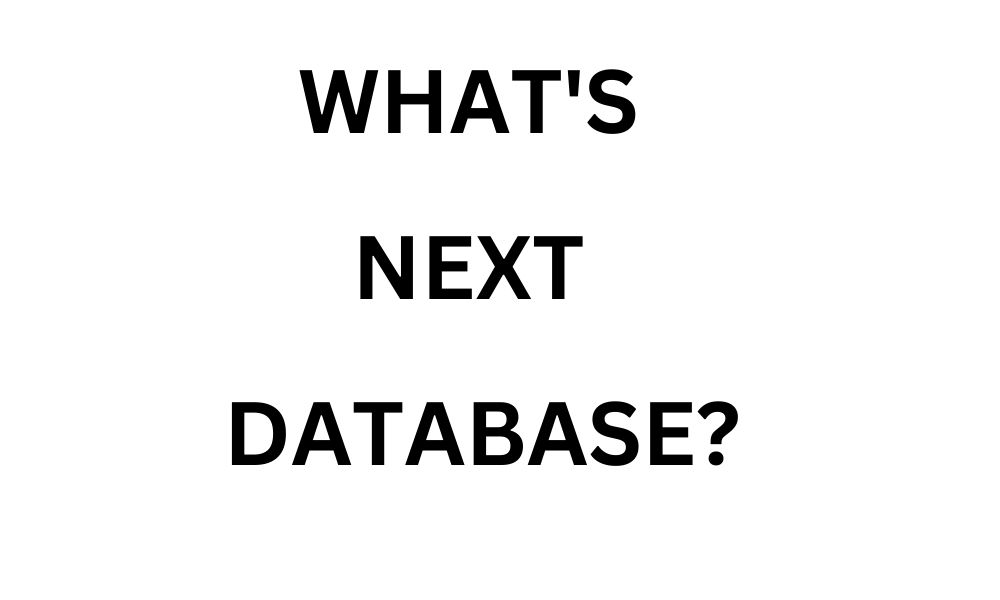The Evolution of Databases: What’s Next?
In today’s digital age, data is the lifeblood of businesses and organizations. From customer information to financial records, databases play a crucial role in storing, managing, and analyzing vast amounts of data. Over the years, databases have evolved significantly, from traditional relational databases to NoSQL databases and beyond. As technology continues to advance, it begs the question: what’s next for databases?
The Rise of NoSQL Databases
Relational databases have been the dominant choice for decades, offering a structured and reliable way to store and retrieve data. However, as the volume and variety of data exploded, traditional databases faced limitations in scalability and flexibility. This led to the emergence of NoSQL databases.
NoSQL databases, which stands for “not only SQL,” are designed to handle unstructured and semi-structured data more efficiently. They offer horizontal scalability, allowing organizations to distribute data across multiple servers and handle massive workloads. NoSQL databases also provide flexibility in data modeling, enabling developers to adapt to changing requirements without the need for complex schema migrations.
One of the most popular NoSQL databases is MongoDB. MongoDB is a document-oriented database that stores data in flexible, JSON-like documents. It has gained traction in various industries, including e-commerce, social media, and content management, due to its scalability and ease of use.
Read:What’s a madame butterfly drink?The Advent of NewSQL Databases
While NoSQL databases addressed some of the limitations of traditional relational databases, they also introduced new challenges. For organizations that still required strong consistency and ACID (Atomicity, Consistency, Isolation, Durability) guarantees, NoSQL databases fell short. This led to the emergence of NewSQL databases.
NewSQL databases aim to combine the scalability and flexibility of NoSQL databases with the ACID guarantees of traditional relational databases. They provide high-performance, distributed architectures while maintaining strong consistency. NewSQL databases achieve this by leveraging innovative techniques such as distributed consensus protocols and multi-version concurrency control.
One notable example of a NewSQL database is CockroachDB. CockroachDB is a distributed SQL database that offers strong consistency, horizontal scalability, and fault tolerance. It is designed to handle global-scale workloads and provides ACID transactions across multiple nodes.
The Promise of Graph Databases
As the complexity of data relationships grows, traditional databases struggle to efficiently represent and query interconnected data. This has led to the rise of graph databases, which excel at managing highly connected data.
Graph databases store data in nodes and edges, representing entities and relationships between them. This data model allows for efficient traversal of relationships, making graph databases ideal for use cases such as social networks, recommendation engines, and fraud detection.
Read:What do scissors symbolize?Neo4j is a leading graph database that has gained popularity in various industries. It provides a query language called Cypher, which allows developers to express complex graph queries in a concise and intuitive manner. Neo4j’s graph algorithms and indexing capabilities enable organizations to uncover valuable insights from highly connected data.
The Emergence of Time-Series Databases
With the proliferation of Internet of Things (IoT) devices and the need to analyze time-stamped data, time-series databases have emerged as a specialized solution. Time-series databases are optimized for storing and analyzing data points with timestamps, such as sensor readings, stock prices, and server logs.
These databases excel at handling high write throughput and efficiently querying time-based data. They often provide built-in functions for time-series analysis, such as aggregations, downsampling, and anomaly detection.
InfluxDB is a popular time-series database that has gained traction in industries such as finance, healthcare, and energy. It offers a scalable and high-performance architecture for handling large volumes of time-stamped data. InfluxDB’s query language, InfluxQL, provides powerful capabilities for analyzing time-series data.
The Future of Databases
As technology continues to evolve, the future of databases holds exciting possibilities. Here are some trends and innovations that are shaping the future of databases:
Read:What are the 7 woes in matthew 23?1. Distributed Databases
With the increasing demand for scalability and fault tolerance, distributed databases are becoming more prevalent. Distributed databases distribute data across multiple nodes, allowing for horizontal scalability and high availability. They often leverage consensus protocols, such as Raft or Paxos, to ensure data consistency.
2. Blockchain Databases
Blockchain technology, which gained prominence with cryptocurrencies like Bitcoin, is finding applications beyond finance. Blockchain databases offer decentralized and tamper-resistant storage of data, making them suitable for use cases such as supply chain management, healthcare records, and voting systems.
3. Cloud-Native Databases
As organizations increasingly adopt cloud computing, databases are evolving to be cloud-native. Cloud-native databases are designed to take full advantage of cloud infrastructure, offering elasticity, scalability, and ease of deployment. They often integrate with cloud-native technologies like containers and serverless computing.
4. Machine Learning Integration
Machine learning is revolutionizing various industries, and databases are no exception. Integrating machine learning capabilities into databases allows for real-time analytics, predictive modeling, and automated decision-making. This integration enables organizations to derive valuable insights from their data and make data-driven decisions.
Conclusion
The evolution of databases has been driven by the need to handle increasingly complex and diverse data. From NoSQL databases to NewSQL databases, graph databases, and time-series databases, each innovation has addressed specific challenges and use cases.
Looking ahead, the future of databases lies in distributed databases, blockchain databases, cloud-native databases, and machine learning integration. These trends will enable organizations to scale their data infrastructure, ensure data integrity, leverage cloud computing, and unlock the power of machine learning.
As technology continues to advance, it is essential for businesses and organizations to stay informed about the latest database innovations. By embracing the right database technologies, organizations can gain a competitive edge, unlock new insights, and drive innovation in the digital era.









